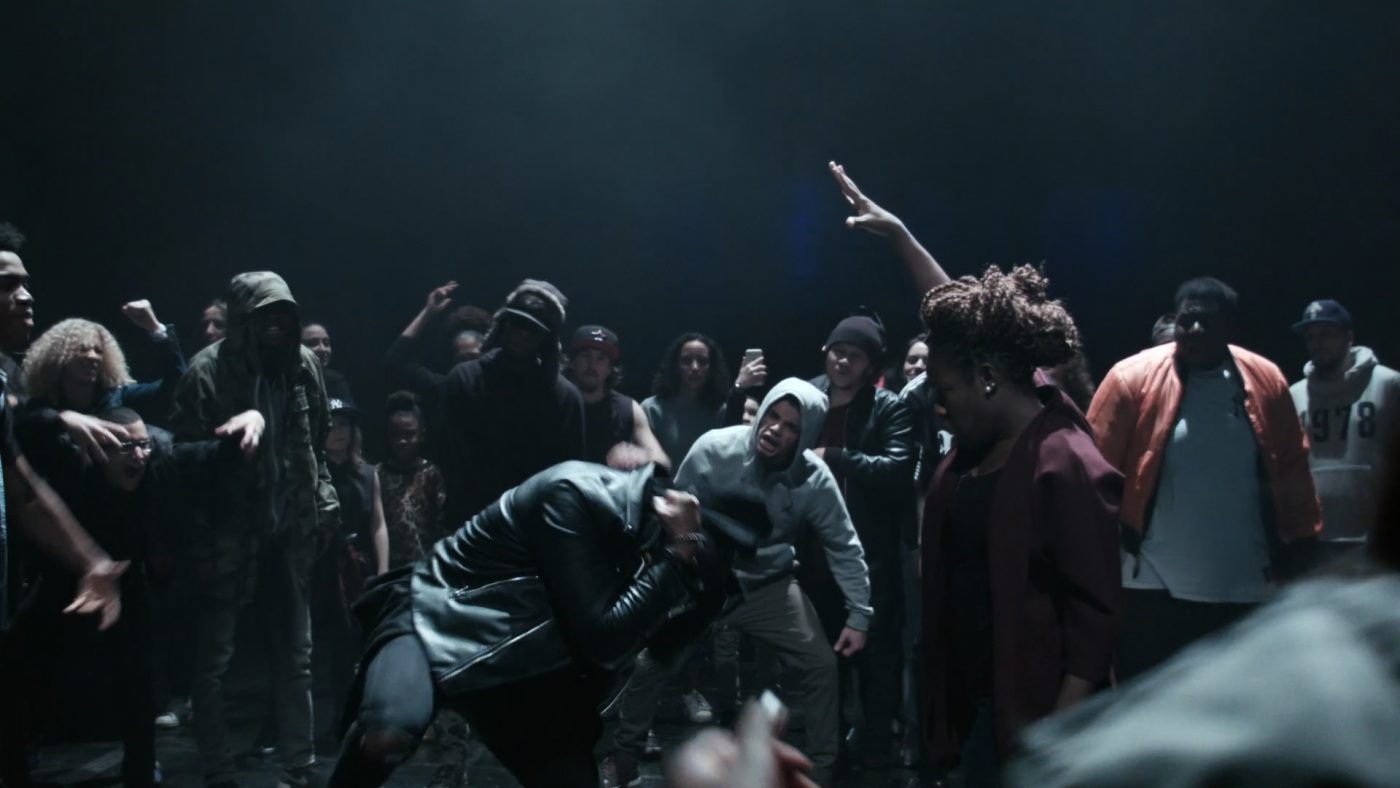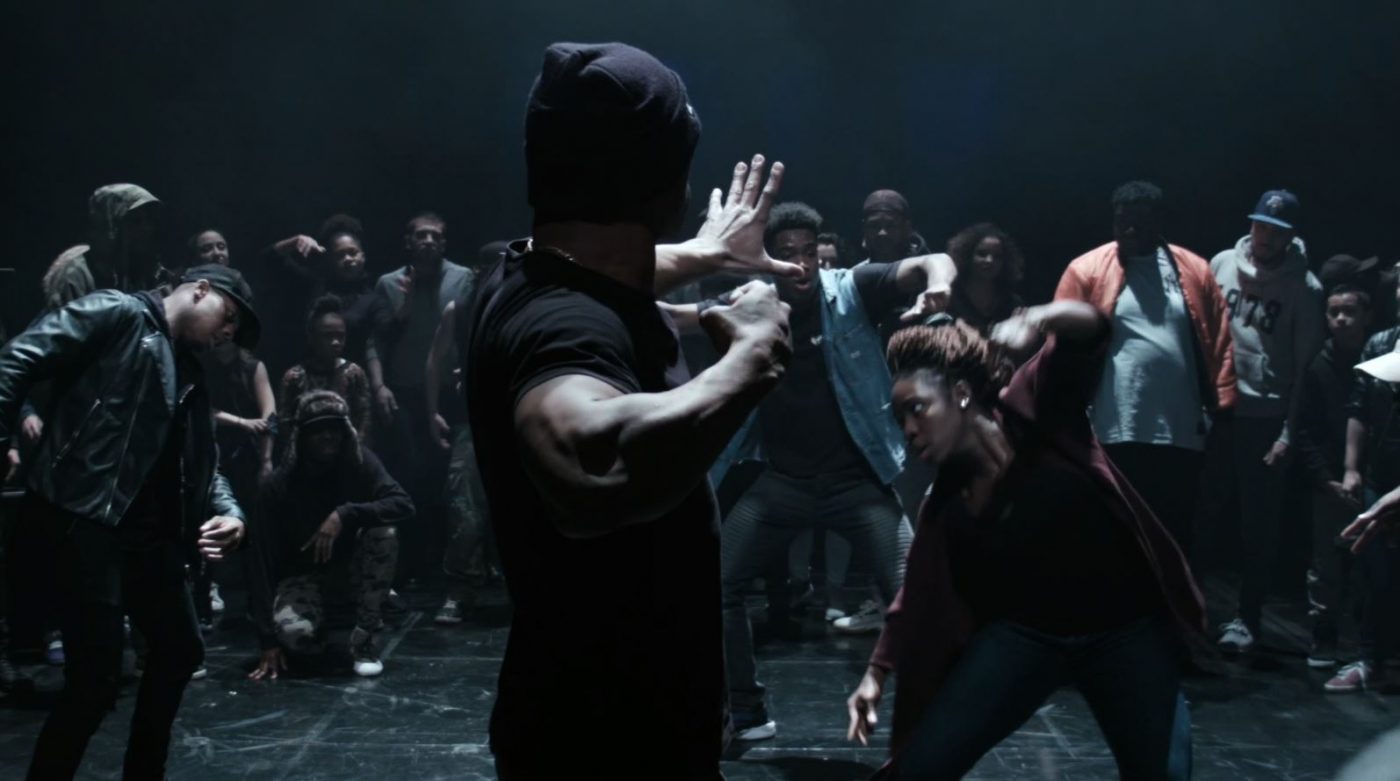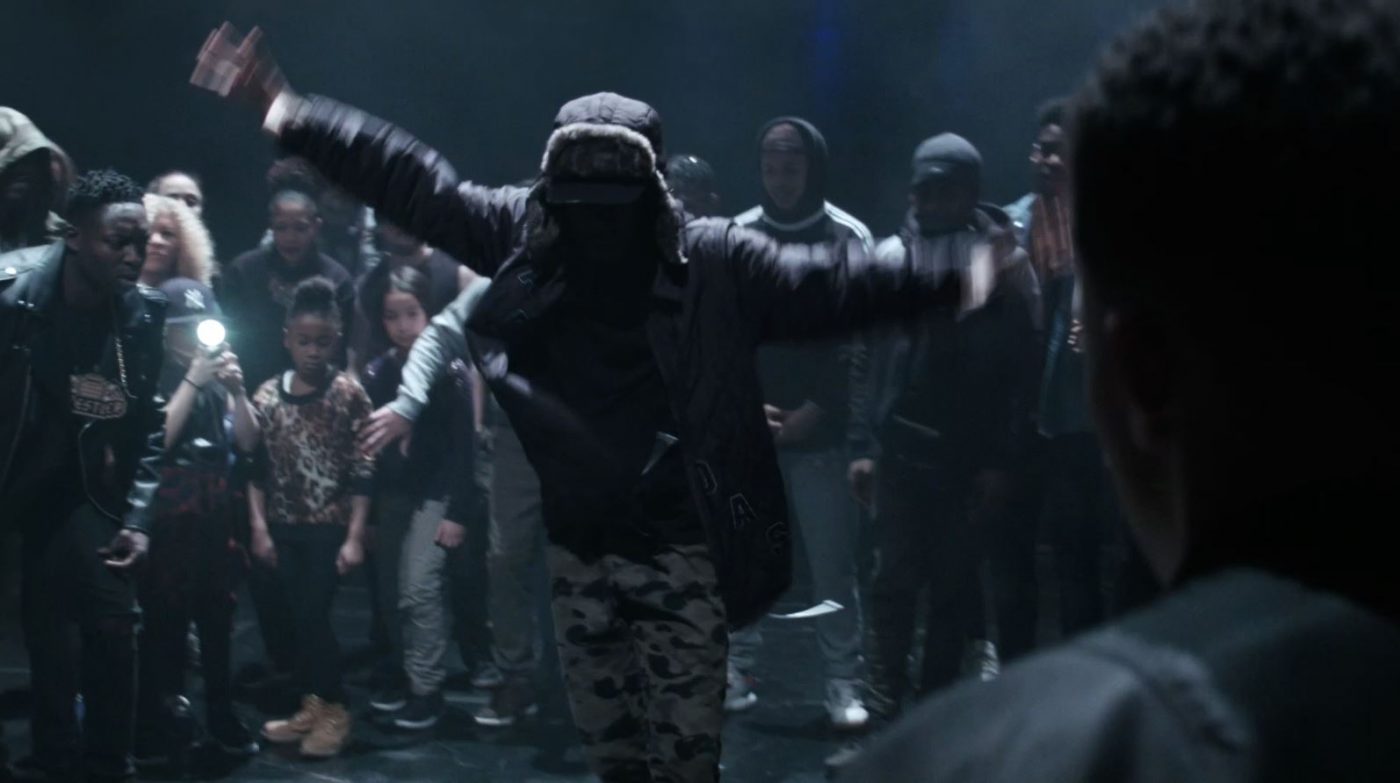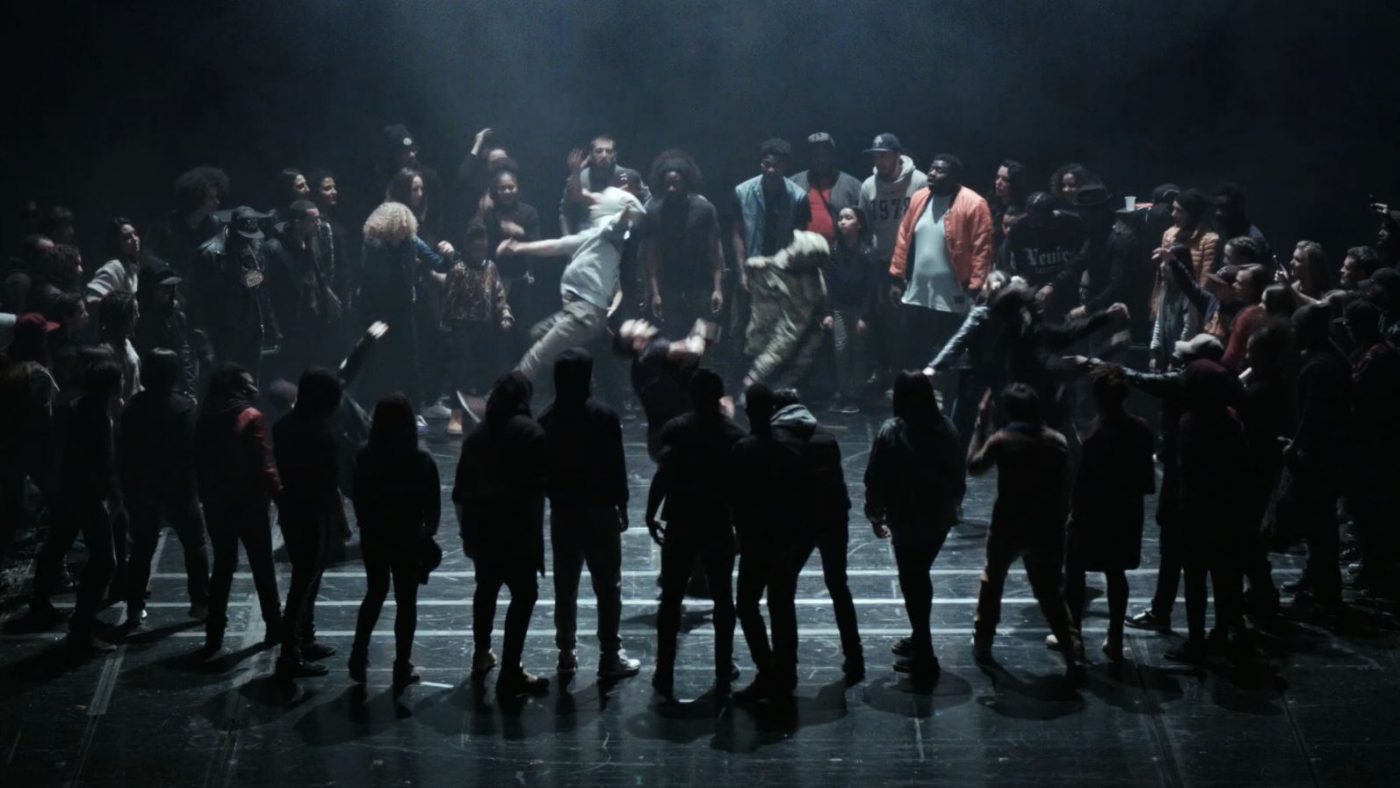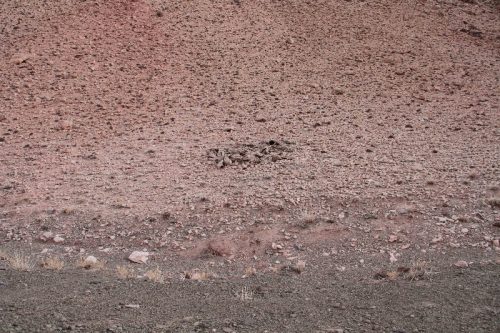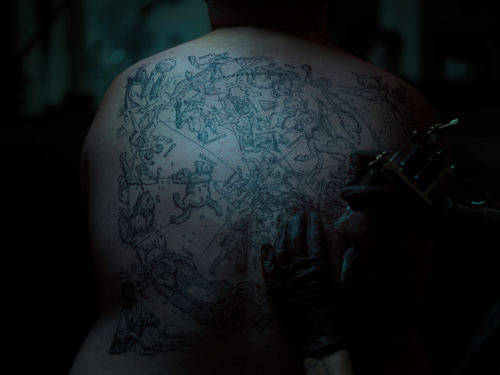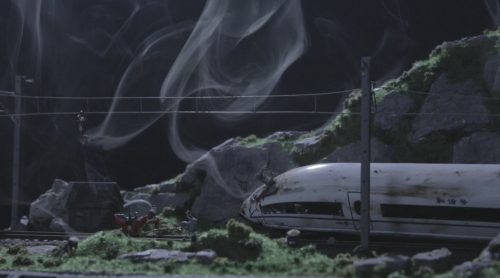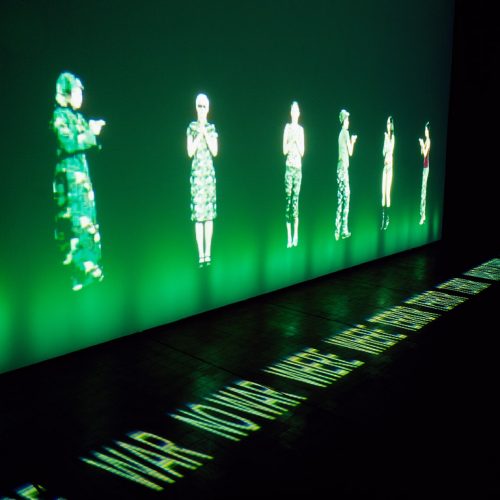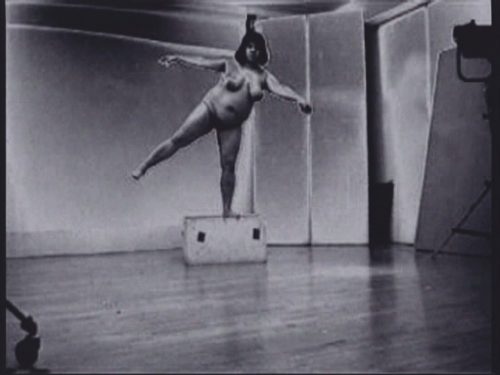Dancing on the Volcano—Kingdom Radically Uplifted Mighty Praise
The increased presence of moving pictures in reporting—since the 1980s with video cameras and television and since the 2000s with smartphones in combination with a general societal willingness to livestream on the Internet—has changed the perception and the operating principles of photography, with algorithms and image databases, where pictures circulate globally in the most varied contexts. These processes require a new thinking, “which appropriately reacts to complex socio-technical dynamics and practices, that generate and move ‘images’.”[1] In the context of these media and technical developments of global imagery that constitute an irresistibly changing visual memory, can be understood works such as Clément Cogitore’s Les Indes galantes. In this work documentation and experience coincide as the result of dancers constantly recording with a personal smartphone in ‘real time,’ while being filmed and observed by others—multiple structures of perspective. An increased democratization of visibility in the virtual world stands in opposition to the existing societal mechanisms that reserve real locations and institutions of arts from parts of society and thereby systematically separate them.
“Documentaries always build on an organized reality, on a fictionalized reality.”[2] (Clément Cogitore, 2017)
The artistic practice of the French filmmaker, video artist, and photographer Clément Cogitore can be located in the intermediate space between cinema and contemporary art. Cogitore considers fictitious the traditional differences that define cinematic staging in opposition to a ‘true’ documentary and acts without considering those categories. Photography and the moving image have the potential to question reality, deconstruct the presumed immutability of current reality, and create alternative realities that make the “here and now” recognizable as one of multiple versions. The present and especially the future are interpreted as malleable, as modifiable. An analytic view of existing and established orders, their artistic and real transformation, are the basis of the Les Indes galantes project. Cogitore works closely on his projects with communities who representatively make phenomena recognizable, to pose macrosocial questions. The individual experience, the dynamics and expressions of the group expand in the dimension of their meaning to an understanding of societal mechanisms in a global perspective. These processes create a symbol for fundamental questions about the dynamics of human coexistence through “a miniature picture of macrosocial phenomena.”[3] (Clément Cogitore, 2017)
“In my view Les Indes galantes is about young people dancing on top of a volcano. […] Clearly this explosion is to some degree political.”[4] (Clément Cogitore, 2017)
Les Indes galantes is a contemporary staging of the Baroque opera ballet by the French composer Jean-Philippe Rameau from 1735. Rameau was inspired by the tribal Indian dances that were performed in Paris by Metchigaema chiefs in 1723 and included their rhythms and movements in his composition. The genre of ballet opera goes back to the composer André Campra, whose ‘L’Europe galante,’ which debuted in 1697, brought love stories from France, Italy, Spain, and Turkey to the stage. Rameau juxtaposed this European emphasis with a Baroque view of forms of galant love in Peru, Persia, and the indigenous North America. His staging was exotic, with opulent garments, astounding the French audience of his time with fantasies of distant lands. These fantasies of ‘exotic otherness’ in Cogitore’s video work, developed from a performance at the Opéra Bastille in Paris, have disappeared.
The dancers that interpret the operatic ballet are young Parisians and dancers from Belgium and Germany. Bodies and dance articulate individual stories, whose narratives achieve a collective meaning. The movements are expressive and have a strong psychological power. The krump style of dance does not differentiate between inner, personal experience, individual condition, and outward expression, gestures, and body language. On the contrary, internal emotions come out in the form of freestyle body movements. ‘Stomps,’ ‘chest pops,’ ‘arm swings’ formulate stories that are called ‘taunts.’ The goal is not a composed choreography for the viewers, rather a state of movement, which allows the inner and the outer to become coherent, which makes positive as well as negative emotions visible, lets them come to the surface. This state, which allows the inner and the outer, the psyche, thoughts, and emotions to become one with gestures, movement, and body, is called ‘amped’ or ‘buck’ and makes nonviolent, physical expression of disappointment, frustration, pain, and aggression possible.
K.R.U.M.P. (Kingdom Radically Uplifted Mighty Praise) refers to the Los Angeles Riots, an outbreak of violence on April 29, 1992 that lasted several days in reaction to the acquittal of the policemen who severely beat Rodney King, an African-American taxi driver, during an arrest. South Central Los Angeles was the epicenter of the unrest, which was a reaction to the racist police brutality, and that is where krumping arose as a nonviolent form of resistance from the confrontation with racism in its violent, systematic dimension. The dance spread across the US and to Europe and today is an international expression of resistance and a criticism of discrimination and racially motivated violence. In February 2017, violent protests arose, reaching into the center of Paris, caused by the severe mistreatment of a young black Parisian in the suburb Aulnay-sous-Bois during an arrest. Police violence against black citizens has become a global issue and finds its nonviolent resistance in the spread of krumping.
“The myth of the underclass is a cultural and political construct which has a distinct historical emergence and development in public discourse. It began to take distinctive shape in the wake of late 1960s representations of ‘urban crisis,’ which focused on riots, disorder, and decay in African-American urban centers. […] It is inextricably linked to ideological issues of race and representation,”[5] as Liam Kennedy describes the emergence of the postindustrial ghettos in the US in conjunction with racist narratives. These urban manifestations, which have been described as an ‘urban crisis’ in the US since the late 1960s, are based on systematic mechanisms of exclusion. Similar structures can also be found surrounding Paris, the banlieues. The psychological dimensions, individual experiences, and collective dynamics that constitute the reality of repression and discrimination by racist structures of contemporary societies form an actual, socio-critical context, in which Les Indes galantes can be read.
Les Indes galantes thematizes Eurocentric history and its mechanisms of cultural appropriation, thus negotiating questions about new concepts of national identity and about contemporary narratives for multicultural French society. This society forms itself as a conglomerate of many cultural influences that has grown over centuries but is still permeated by hierarchies of racist structures that generate diametrically opposed everyday realities within a city. By opening the elite location of the Opéra Bastille for the first time to K.R.U.M.P dancers who were normally shut out of privileged spaces, Les Indes galantes carries out a symbolic takeover. The dancers, who develop their own individual and simultaneous collective interpretation of this Baroque operatic ballet, not only enter the view of the smartphone, but also the visibility of the stage and the video camera. In this way, Cogitore creates an artistic synthesis, a touch point of parallel societal realities and their ‘stages’ in media. Les Indes galantes establishes “artistic practice as a co-designer, as an actor in the concert of reality,”[6] in that it recognizes societal mechanisms, intervenes in existing orders, and organizes them according to new principles in order to evoke a different present and with it a different future.
“This dance is a chance because it is part of the violence that we create and it is a good way to understand it by freeing ourselves from speech. The only dance worth dancing.”[7] (Heddy Maalem, 2012)
Text: Nadine Isabelle Henrich, 2018
[1] Holert, Tom: Regieren im Bildraum [Ruling in the Image Space], Berlin 2008, p. 16.
[2] Clément Cogitore, Interview about Braguino, 2017, URL: http://www.arte.tv/de/videos/077193-006-A/clement-cogitore/ (last accessed on 18.09.2018).
[3] Ibid.
[4] Clément Cogitore, Interview about Les Indes galantes, 2017, URL: http://www.youtube.com/watch?v=UMv4EyS08_g (last accessed on 18.09.2018).
[5] Kennedy, Liam: “Representations of the Underclass: Race, Poverty and the Postindustrial Ghetto,” in: The Ghent Urban Studies Team (ed.): The Urban Condition: Space, Community and Self in the Contemporary Metropolis, Rotterdam 1999, pp. 266–299, here: p. 267.
[6] Lang, Johannes: “Drei Wirklichkeitsbezüge künstlerischer Praxis” [Three References to Reality in Artistic Practice], in: Lotte Everts/Johannes Lang/Michael Lüthy/Bernhard Schieder (ed.): Kunst und Wirklichkeit heute. Affirmation – Kritik – Transformation [Art and Reality today. Affirmation – Critique – Transformation] Bielefeld 2015, pp. 7–15, here: p. 13.
[7] Heddy Maalem, choreographer of ‘Éloge du puissant royaume,’ cit. in, same: “Je parle KRUMP,” in: Africultures, No. 99–100, May 2012, p. 249.
